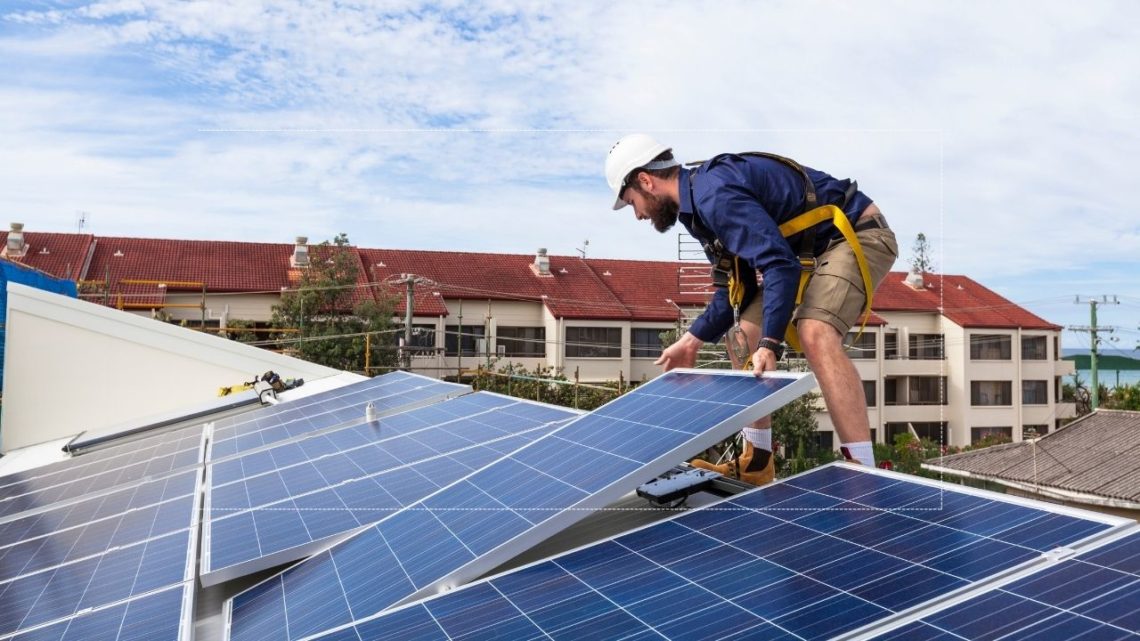Lori Ballen, the owner of this website, benefits from purchases made through her affiliate links.
Solar panels are an amazing way to generate electricity without using fossil fuels. However, they don’t last forever. They eventually wear out and require replacement.
Here’s Why:
The main cause of failure is the degradation of its polycrystalline silicon cells. Polysilicon is used in most commercial solar panels because it has high efficiency and low cost. The lifetime of a solar cell depends on many factors including temperature, light intensity, air humidity, and other environmental conditions.
There are two types of panels: monocrystalline and polycrystalline. Monocrystalline are more expensive than polycrystalline panels. But they also last much longer. A typical monocrystalline solar panel lasts 25-30 years, compared to 15-20 years for a polycrystalline solar panel.
Monocrystalline panels are made from single crystals of silicon. Because of this, they are stronger and less likely to break when installed on your roof. And they can be inspected under a microscope to make sure that there aren’t any cracks or breaks.
Polycrystalline panels are cheaper but weaker than monocrystalline panels. This means that they’re more likely to crack if you install them improperly. In addition, their lifespan is shorter than monocrystalline panels.
If you have a large rooftop with lots of space, then you might want to consider installing a monocrystalline system. You’ll save money over time by not having to replace them as often.
In general, a solar panel will last for about 20 years if it receives full sunlight every day. If the panel gets less than full sun exposure each day, then it can last up to 30 years or longer. In cloudy areas where there is no direct sunlight, a solar panel may only last 10-15 years.
If you have a system that needs replacing after just 5 years, then it isn’t performing optimally. It might be time to consider upgrading it with newer technology.
Solar Panel Degradation
Solar panels degrade over time due to exposure to sunlight. This degradation can be accelerated by high temperatures, humidity, rain, snow, wind, hail, salt spray, dust, insects, birds, rodents, and other animals. When exposed to sunlight, they lose electrons from their outermost layer. These lost electrons create free radicals which damage the solar cells.
Over time, these damaged cells become weaker and produce less energy. Eventually, they stop working altogether.
This process is called “solar cell aging”. When this happens, the solar panel must be replaced.
Solar panels degrade at different rates depending on their location, orientation, exposure to sunlight, temperature, humidity, and other factors. Some can last up to 50 years before they need replacement. Others can fail within 3-5 years.
Degradation rates vary based on the following factors:
• Location – The higher the latitude, the faster the solar panel degrades.
• Orientation – The panel should face south to receive maximum sunlight.
• Exposure to sunlight – The more sunlight it receives, the quicker it degrades.
• Temperature – Higher temperatures accelerate degradation.
• Humidity – High humidity increases the rate of degradation.
• Wind – Strong winds increase the rate of degradation.
• Hail – Hail storms cause significant damage
• Salt Spray – Salt spray causes corrosion.
• Insects – Birds, rodents, and other pests eat away at panels.
• Dust – Heavy dust deposits build up and reduce efficiency.
• Animals – Animals chew through wires and destroy electrical connections.
• Weathering – Solar panels placed near trees, shrubs, and plants tend to fade faster.
• Age – Older panels are more likely to fail sooner than younger ones.
The best way to prevent failure is to install them facing south. To maximize their lifespan, place them in an area that receives full sunshine daily. Avoid placing them in areas that get direct sunlight during the middle of the day when the sun is most intense.
You can also protect your system from weather conditions such as strong winds, heavy rains, and hailstorms.
When new, they generally have an original output of around 12% of the power generated by the original manufacturer. After several years, the output drops to between 7%-10%. Most solar panel manufacturers recommend replacing solar panels when they drop below 80% of their initial output.
However, some still work well even though they have dropped to as little as 50% of their initial output. You should always check the warranty before buying a solar panel. Some warranties cover solar panels that have fallen below 80%, while others do not.
Solar Cell Aging

Aging occurs when the cell loses electrons through oxidation. Oxidation causes the surface of the solar cell to change color from black to brownish-red. As the solar cell ages, the efficiency of the solar cell decreases.
When solar cells age too quickly, they begin to crack. Cracks allow moisture into the solar cell causing corrosion. Corrosion weakens the solar cell even further. Once cracks form, the solar cell becomes useless.
Most fail because they were not installed properly. Poor installation can lead to uneven heating of the solar module. This can result in thermal stress fractures in the solar cell. Thermal stress fractures occur when the solar cell is heated unevenly.
Thermal Stress Fractures
A solar cell is made up of multiple layers. Each layer is designed to perform a specific function. For example, the front side of the solar cell contains electrical contacts. The backside of the solar cell contains the junction box. The middle portion of the solar cell is the active area.
During installation, the solar cell is usually placed between two glass plates glass plate acts as an insulator. The top glass plate keeps out dirt and debris while allowing sunlight to enter the solar cell. The bottom glass plate allows heat generated inside the solar cell to escape.
During operation, the solar cell generates electricity. Heat is produced at the junction box. This heat travels through the solar cell until it reaches the backside of the solar cell. At this point, the heat is transferred to the outside environment via the glass plate.
As the solar cell heats up during operation, it expands slightly. Because the solar cell is sandwiched between two glass plates, the expansion of the solar cell creates pressure on the solar cell. This pressure is transmitted to the solar cell’s internal structure.
The pressure exerted on the solar cell can cause cracks to form in the solar cell. These cracks are known as thermal stress fractures.
Solar Cell Damage Caused By Installation Issues
Poor installation can also cause damage to the solar cell. During installation, the
Factors That Can Affect The Solar Panel Lifespan
There are several things that can affect how long a solar panel lasts. Here are some examples:
1) Temperature – When temperatures get too hot, the performance decreases. This is especially true when the ambient temperature exceeds 60 degrees Fahrenheit.
2) Humidity – High humidity levels reduce the lifespan. Water droplets can cause physical damage to the surface causing corrosion.
3) Light Intensity – Low light intensities also decrease the lifespan.
4) Air Pollution – Air pollution from smog, dust, soot, and pollen can degrade the performance over time.
5) Wind Speed & Direction – Strong winds can blow away solar panels. Also, the wind blowing parallel to a panel can increase drag force and decrease the power output.
6) Sunlight Duration – Short duration periods of sunshine can greatly shorten the life..
7) Dust – Dust particles can accumulate on the surface and block sunlight.
8) Hail Damage – Hail storms can break off pieces of a solar panel and throw them into the sky. This debris can fall back down onto the panel and cause damage.
9) Snowfall – Heavy snowfall can cover a system and prevent sunlight from reaching it.
10) Tree Growth – Trees growing nearby can shade it from sunlight and lower energy production.
11) Lightning Strikes -Lightning strikes can destroy a solar panel and send metal fragments flying through the air. These fragments can hit nearby trees and buildings and cause serious damage.
12) Animals – Birds, squirrels, raccoons, deer, and other animals can chew on wires and cables and short circuit a panel.
13) Storms – Hurricanes, tornadoes, thunderstorms, and other severe weather events can damage a solar panel and create dangerous electrical hazards.
14) Rainwater Leaks – Rainwater leaks can cause water damage to a panel and reduce its ability to generate electricity.
Extend The Life Of Your Solar Panels
In addition to regular maintenance, here are some additional things to consider when maintaining your solar energy system.
1) Regularly inspect your system for cracks and damage.
2) Clean the glass face with a soft brush and clean solution.
3) Inspect the mounting hardware regularly for signs of corrosion.
4) Remove dead leaves and twigs that may be covering the solar panels.
5) Monitor the temperature of the inverter box. It should stay below 50 degrees Fahrenheit.
6)Check the wiring connections periodically for loose or corroded connections.
7) Keep the solar panels at least 20 feet away from any structures.
8) Avoid storing batteries in direct sunlight.
9) Don’t leave the battery bank unattended while charging.
10) Be sure to use only quality solar cells.
11) Make sure you have enough storage capacity for your needs.
12) Use proper grounding techniques.
13) Store the panels where they will not be exposed to strong winds or high temperatures.
14) If possible, mount the panels on an elevated platform.
15) Install the panels facing south or east if possible.
16) Consider installing a rainwater collection system to help keep the solar panels dry.
17) Check the voltage level of the solar panels once a month.
18) Replace the inverters every five years.
19) When replacing the inverters, make sure the new ones match the original equipment manufacturer’s specifications20) Never install solar panels over concrete surfaces.
21) Keep the panels free of dirt and dust.
22) Always store them in a cool, dry place.
23) To avoid damaging the solar panels, never use a blowtorch to remove paint or stickers.
24) Never expose the solar panels to extreme heat or cold.
25) To extend the life of your solar panels, use only top-quality components.
26) Before purchasing a solar power system, check to see how much money you would save by using solar power instead of traditional sources of electricity.
27) Remember to always read and follow all installation instructions provided by the solar installer.
Solar Panel Warranties
There are two types of warranties offered by manufacturers:
1) A limited warranty covers parts and labor during the first year of ownership.
2) An unlimited lifetime warranty covers parts and labor throughout the life expectancy of the product.
Most solar panel 25-year warranties cover defects in materials and workmanship. They do not cover normal wear and tear, such as scratches, dents, or fading.
The good news is, a standard 25-year warranty should cover all weather damage to solar panels. (solarreviews.com)





